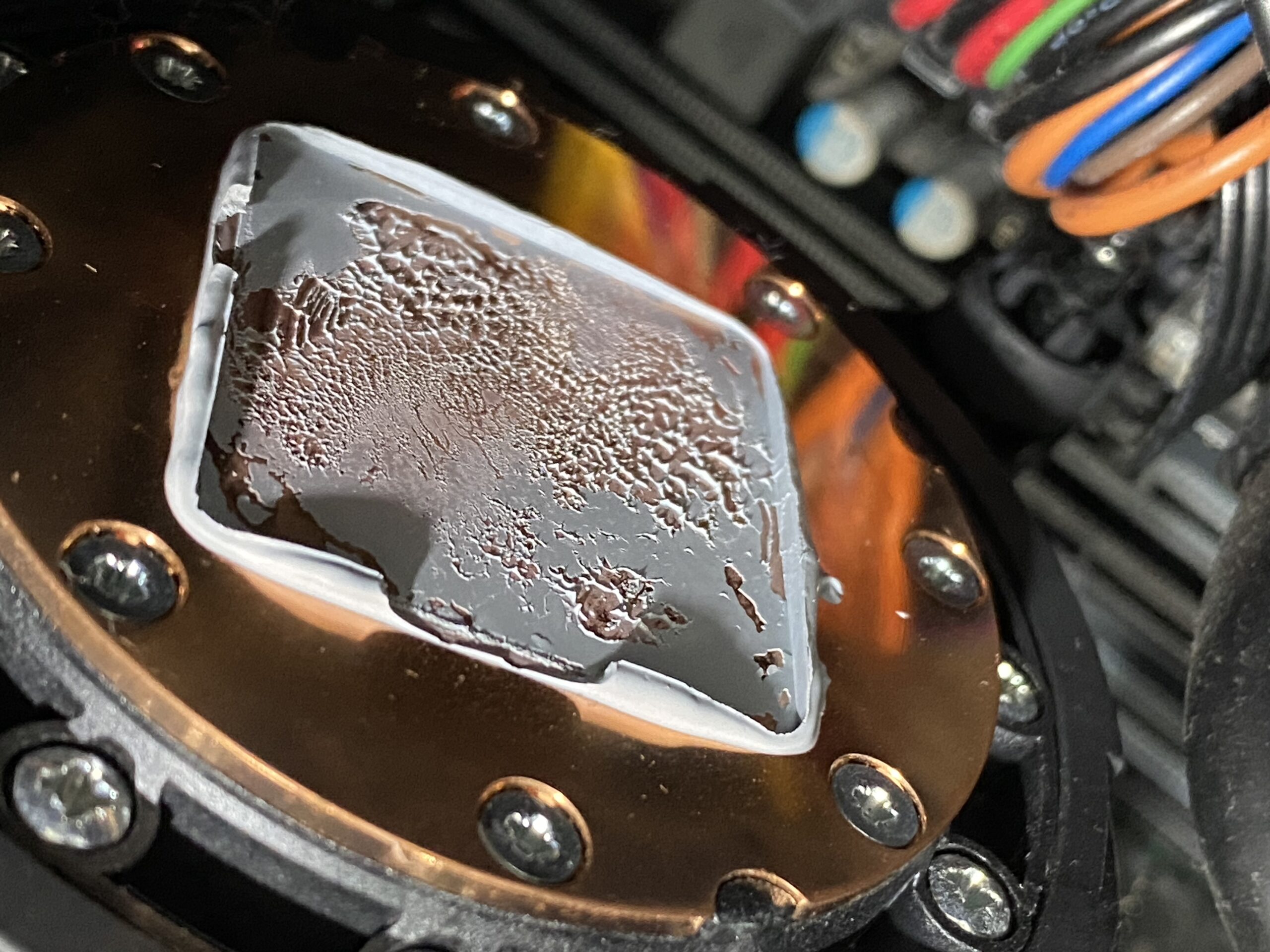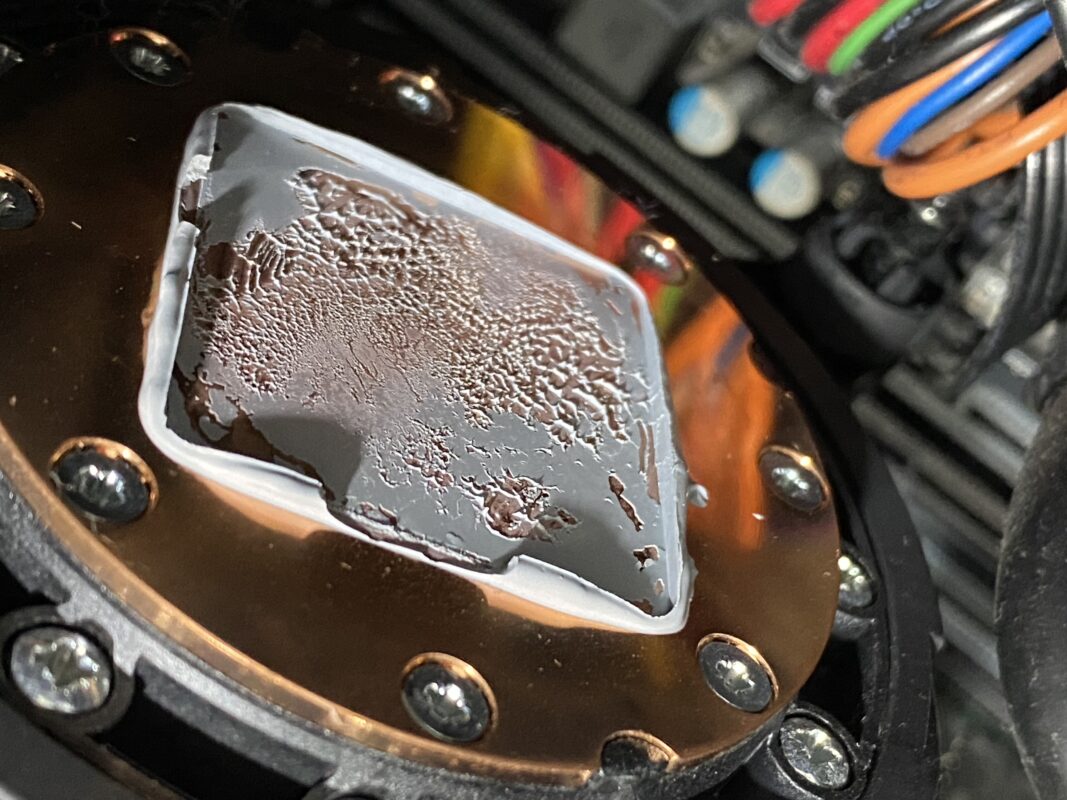Thermal paste

Thermal paste or thermal compound is essential in CPU and GPU cooling.
Without thermal paste, there is no cooling!
Applying or reapplying thermal paste to the main processor, the dedicated graphics card, and the integrated graphics chipset is essential and mandatory.
For equipment older than 5 years, whether or not they have been used intensively, this process is vital. After 3 years, the thermal paste applied in the factory solidifies and the heat transfer is no longer performed efficiently.

Replacement of thermal paste required by main procesors:
CPU (Central Processing Unit) and GPU (Graphics Processing Unit) are the two processors that require direct cooling. When using the computer, laptop, tablet, phone, processor or processors (both main-CPU and graphics-GPU) the motherboard or dedicated graphics cards become hot. Processors can reach temperatures above 80 degrees Celsius.
To keep the processor at the optimum operating temperature, a radiator and cooler (fan) are mounted on top of it.
A paste with heat transfer properties is applied between the cooler and the processor. It contains fine particles of metals or non-metals such as carbon, silver, copper, gold or other chemical compounds that help to dissipate heat quickly.
Over time, the thermal paste solidifies, its properties decrease and in the end, the temperature of use increases considerably.
Effects and reasons leading to the need to reapply thermal paste:
Thermal paste must be reapplied to:
- extend the life of the processor;
- to maintain in the parameters the optimal processing temperature;
- prevent the computer from shutting down suddenly;
- prevent software instability.
The increase of the use temperature, leads to the damage of the processor by melting the elements from its construction and finally even the burning of the internal circuits.
The effects of this increase in temperature make it difficult to access certain software that makes special use of the processing capacity of the equipment. Together with the lack of proper ventilation, due to the loading of the fan blades with dust and the placement of dense dust between the cooler (fan) and the radiator, they lead to irreversible damage to the processor, one of the most expensive components.
Recommendations:
Thus, it is recommended to change the thermal paste for equipment with a service life of more than 5 years. Complete disassembly for professional cleaning of active or passive ventilation and cooling assemblies is carried out periodically at least every 12 months.
DORADO SYSTEMS uses Arctic MX4 to change or apply thermal paste. It is a chemical compound made up of carbon micro-particles that use to an extremely high thermal conductivity.
This ensures that the heat generated by the CPU or GPU is dissipated quickly and efficiently. The superb performance of the Arctic MX-4 thermal paste makes it the best companion for overclockers and enthusiasts.
Without thermal grease, there is no cooling!
Thermal paste is a substance that makes it possible to transfer heat between the processor and the radiator. It has a higher conductivity coefficient than air and helps reduce the problem of overheating the processor.
Thermal paste comes in two different types: conductive and non-electrically conductive. The electrically conductive type of thermal paste has fine particles of silver, copper or aluminum, which promise greater efficiency in heat transfer.
It must be used carefully, otherwise it may cause an electrical short circuit in case of contact with the motherboard elements. Non-conductive thermal paste is composed mainly of carbon, silicone or zinc oxide and does not affect in case of contact with other live elements.
What is the thermal paste used for?
The use of thermal paste is indispensable. Generally, a cooler is used to remove the heat from the processors so that each processor guarantees a uniform operation with its type of cooler, form factor given by the socket. If a wrongly sized chiller is used, it will cause overheating problems.
The lack of thermal paste makes it impossible to transfer heat between the processor and the cooler, due to the air gaps formed by the imperfect physical contact between the processor and the radiator. This leads to overheating of the processor. This problem is solved by applying this thermal compound together, thus filling the small air gaps.
How to properly apply thermal paste?
If the processor and radiator have old thermal paste on them, the first step is to clean the two contact surfaces. It is better to use a plastic blade to remove the compound, being careful not to scratch the base of the radiator. Then rub the base well using isopropyl alcohol so that the residue of the thermal compound used before to be completely removed.
Then apply a small drop to the base and spread it evenly using a plastic card over the entire contact surface of the processor. After that, place the radiator over and fix it using its base plate clamps.
Common mistakes:
It is often seen that mistakes are made during the installation of the radiator and the application of thermal paste. The most common mistake encountered is to use too much thermal paste. Thermal paste, if applied in excess, will damage the correct heat dissipation and, if it comes into contact with exposed components, such as capacitors and motherboard resistors, will result in possible short circuits.
Another common mistake encountered is to apply thermal paste over the protection placed on the contact side between the radiator and the processor, which is found on most new radiators. In such cases, the seal must be removed at the first installation.
